Contact us
LED Display Power Consumption Guide: Watts, Amps & Cost Calculator
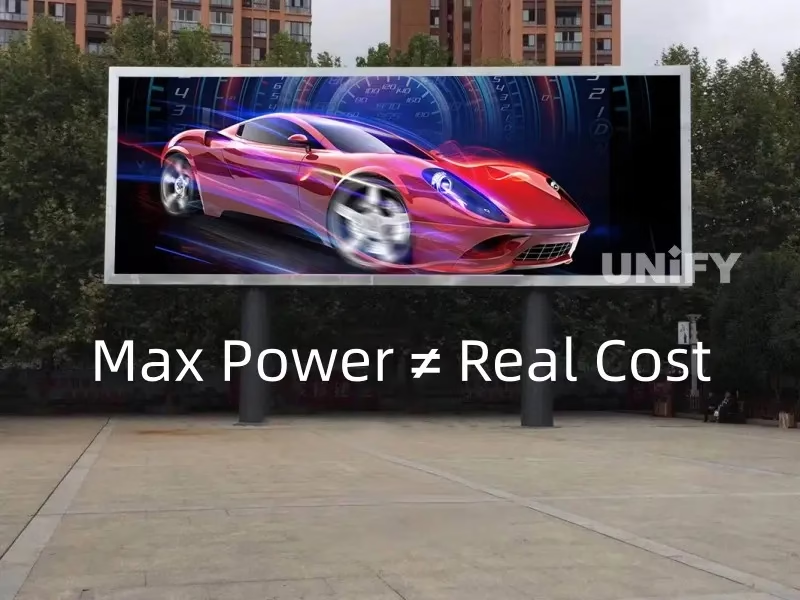
Understanding led display power consumption is often the most confusing part of planning a new video wall project. When you look at a specification sheet and see a figure like “Max Power: 900W/m²,” it is easy to worry that electricity costs will destroy your operating budget before the screen even turns on.
However, that number is misleading. It represents the limit for electrical safety, not your daily reality. The actual running cost is typically only 30% to 35% of that peak value.
In this comprehensive guide, UnifyLED breaks down the engineering facts. We will teach you the critical difference between Peak and Average power, share real lab data from our core product series, and provide you with the formulas to calculate both your monthly electricity costs and the necessary Amps for a safe installation.
Table of Contents
1. What is LED Display Power Consumption: Peak vs. Average
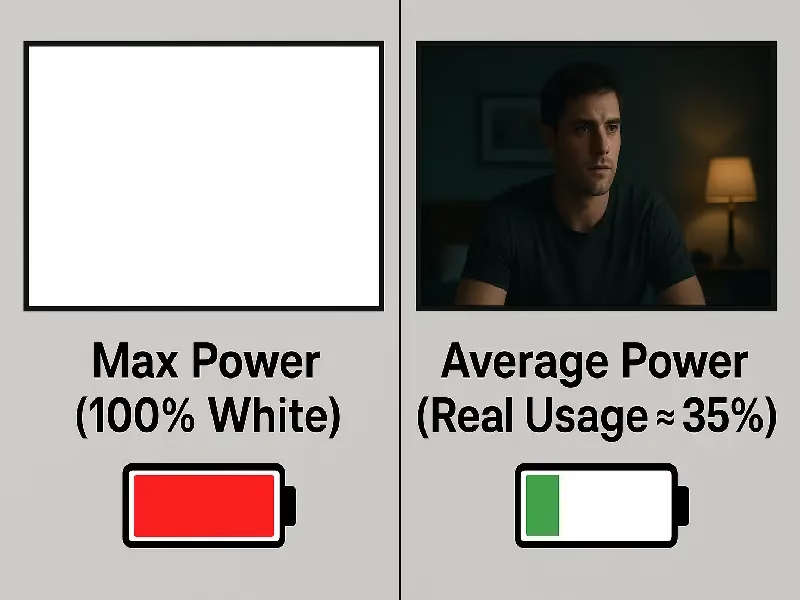
Planning to install a massive UnifyLED OK Series billboard? You might be shocked when you glance at the specification sheet and see “Max Power: 900W/m².”
Many business owners and system integrators make a common mistake: they assume a 20-square-meter screen operates like a gigantic piece of industrial machinery. They multiply the total area by the peak wattage and panic, worrying that the high led display power consumption will eat up their advertising profits before the screen even turns on.
Here is the truth: That “Max Power” figure is primarily for safety and electrical design. The actual electricity cost you will pay is typically only 30% to 35% of that peak number.
To accurately plan your project and budget, you must distinguish between the two most critical numbers on any LED datasheet: Max Power and Average Power.
Max Power Consumption (Peak)
This represents the extreme scenario where the screen displays a Full White image at 100% brightness.
What it is: The instantaneous limit of power usage.
What it is used for: This number is ONLY used by electricians to design the circuit infrastructure—specifically for selecting the Distribution Box, Circuit Breakers, and Wire Gauge.
Important: Never use this number to calculate your monthly electricity bill.
Average Power (Real)
This is the realistic power usage when the screen is playing standard content like advertisements, movies, images, or text. Since dynamic video content has dark areas and varied colors, the diodes are rarely all lit at full capacity simultaneously.
What it is: The actual energy consumed during normal operation.
What it is used for: This is the correct metric to use when calculating your daily operation costs and electric bill.
2. Factors Influencing LED Display Power Consumption
Why does an outdoor billboard require thick copper cables while an indoor meeting screen plugs into a standard circuit? The led display power consumption is not a fixed number; it fluctuates significantly based on three physical and operational factors.
Understanding these variables will help you choose the right screen and optimize your energy usage.
Brightness Levels (Nits)
The most direct factor affecting power is the brightness requirement. It is simple physics: to produce more light, you need more energy.
Outdoor Screens: To remain visible under direct sunlight, outdoor displays (like the UnifyLED OK Series) typically require brightness levels exceeding 5,500 nits.
Indoor Screens: Indoor environments are dimmer, so screens usually run at 600 to 800 nits to avoid causing eye strain.
The Impact: Consequently, the power consumption of an outdoor screen is naturally 3 to 4 times higher than that of an equivalent indoor screen.
Scanning Mode (Driver Method)
This is a technical specification often overlooked by buyers, but it plays a huge role in led display power consumption.
Static Scan (1/1): This method keeps the current flowing to the LEDs constantly. It is commonly used in outdoor P10 DIP screens to achieve maximum brightness. While it makes the screen incredibly bright, it is also the most power-hungry drive method.
Dynamic Scan (e.g., 1/16 or 1/32): Most high-definition indoor screens use dynamic scanning. The driver IC switches the LEDs on and off rapidly (thousands of times per second). Because the LEDs are technically “off” for a fraction of a second, this method significantly reduces heat and power usage compared to static scanning.
Content Displayed
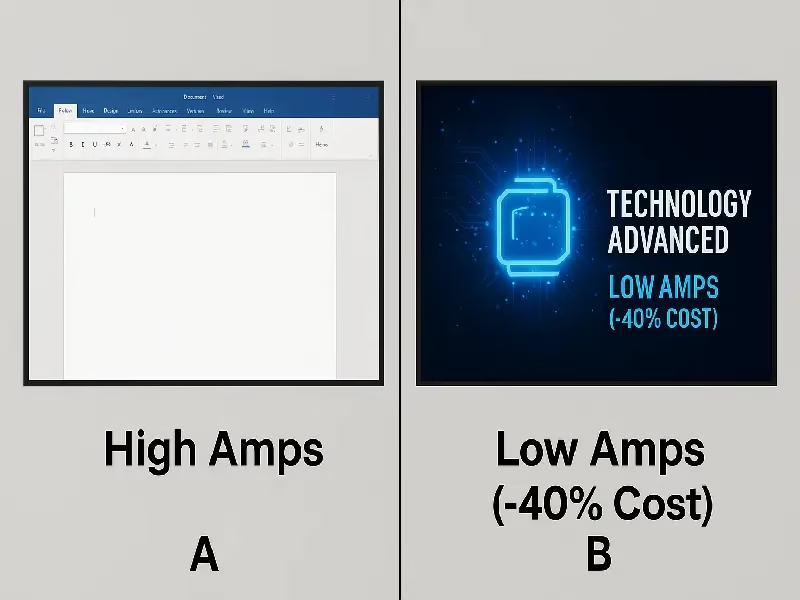
Since LED screens are self-emissive (each pixel produces its own light), what you choose to show on the screen directly impacts your electric bill.
White vs. Dark Content: Displaying a solid white background (like a PowerPoint presentation or a Word document) requires every Red, Green, and Blue diode to light up at 100%.
The Difference: In contrast, playing a standard movie or a video with a dark background can reduce energy usage by up to 50%. A black pixel on an LED screen consumes almost zero power. Therefore, content design is a hidden “energy saver.”
3. What is the Average Power of UnifyLED Displays?
Theory is useful, but accurate engineering data is what you need to build your project. To help you plan your electrical infrastructure and operating budget with precision, we believe in full transparency regarding our product specifications.
Below is the measured led display power consumption data for UnifyLED’s three core product series. You can use these figures as a reliable reference for your calculations.
UnifyLED Power Consumption Data Sheet
| Product Series | Application | Pixel Pitch | Max Power (Peak) | Avg Power (Real Cost) |
| OK Series | Outdoor Billboard | P4 – P10 | 900 W/m² | 300 W/m² |
| Ehonor Series | High-End Indoor | P1.2 – P4 | 600 W/m² | 200 W/m² |
| Metastar Series | Stage Rental | P2.6 – P4.8 | 710 W/m² | 240 W/m² |
How to Read This Table:
Use the “Max Power” column to tell your electrician how big the circuit breakers and cables need to be.
Use the “Avg Power” column to estimate your monthly electricity bill.
As you can see, our high-end indoor Ehonor Series is optimized for efficiency, consuming only 200W/m² on average, making it an ideal choice for 24/7 command centers where energy costs accumulate quickly. Meanwhile, the outdoor OK Series utilizes its higher power headroom to deliver the high brightness needed to combat sunlight.
4. How to Calculate Actual LED Display Power Consumption?
Now that you have the product specs, let’s do the math. To plan a successful project, you need to perform two specific calculations: one for your budget (Cost) and one for your safety (Amps).
How to Calculate Daily Electricity Cost? (For Budgeting)

To estimate your operating expenses, you must use the Average Power figure. Using the Peak Power here will result in a budget that is terrifyingly inaccurate and unnecessarily high.
The Formula:
Daily Cost = Screen Area (m²) × Average Power (kW) × Hours × Rate
Case Study:
Let’s imagine you are installing a 50m² outdoor digital billboard next to a highway using the UnifyLED OK Series (P8).
Average Power: 300W/m² (or 0.3 kW/m²)
Operating Hours: 14 hours/day (6:00 AM to 8:00 PM)
Electricity Rate: $0.15 per kWh (Commercial average)
The Calculation:
Total Power Needed: 50m² × 0.3 kW = 15 kW
Daily Consumption: 15 kW × 14 hours = 210 kWh
Daily Cost: 210 kWh × $0.15 = $31.50
Running this massive 50-square-meter screen costs only about $31.50 per day. If you had calculated this using the Max Power (900W), you would have estimated a cost of nearly $100/day. Understanding accurate led display power consumption effectively saves 70% of your projected budget.
How to Calculate Amps for Installation? (For Engineers)
While the accountant cares about the average watts, the electrician only cares about the Peak Watts. You must calculate the maximum current (Amps) to determine the thickness of the copper cables and the rating of the circuit breakers.
The Formula:
Amps = Total Max Watts / Voltage
The “Voltage Trap” (110V vs. 220V):
Voltage plays a massive role in installation infrastructure. Let’s look at a larger 100m² outdoor screen with a Total Max Power of 90,000W (90kW).
Scenario A: Europe / Asia (220V – 240V)
90,000W ÷ 220V ≈ 409 Amps
Result: You need a main distribution box rated for roughly 450A. This is manageable with standard industrial cabling.Scenario B: USA / North America (110V – 120V)
90,000W ÷ 110V ≈ 818 Amps
Result: The current doubles! Running 800+ Amps on single-phase power is practically impossible and dangerous.
Engineering Solution:
For clients in 110V regions (like the US), when the led display power consumption load is this high, you absolutely must use 3-Phase Power. This not only balances the load but significantly reduces the amperage per wire, saving you thousands of dollars on heavy-gauge copper cabling.
5. Does Energy-Saving LED Display Really Save Cost?
When clients see the price tag of a premium “Energy-Saving” LED screen, the first reaction is often hesitation. “Why pay 15% more upfront?”
Is “energy-saving” just a marketing buzzword, or does it make financial sense? To answer this, we need to analyze the technology behind led display power consumption and run a 3-year ROI calculation.
The Technology: Common Anode vs. Common Cathode

Most standard outdoor LED screens in the market use older “Common Anode” technology. They supply a unified voltage (usually 5V) to all LED chips (Red, Green, and Blue).
The Waste: The Red LED chip actually only needs about 2.8V to work. In a standard screen, the excess voltage (5V – 2.8V = 2.2V) is wasted and converted directly into Heat.
The UnifyLED Solution:
Our Outdoor Energy Saving Solution (available for the OK Series) utilizes Common Cathode technology.
Precision Power: It features dual-channel power supply. We send exactly 2.8V to the Red chips and 3.8V to the Green/Blue chips.
The Result: No wasted voltage means significantly less heat generation and a reduction in raw led display power consumption by about 30% to 40%.
The ROI Calculation: Is It Worth the Investment?
Let’s compare a standard outdoor screen against the UnifyLED Common Cathode configuration.
(Scenario: 50m² Outdoor Billboard, running 14 hours/day)
Cost Item | Standard Outdoor Screen (Common Anode) | UnifyLED Energy Saving Solution (Common Cathode) |
Daily Electricity Cost | $45.00 | $31.50 (save $13.50) |
Yearly Electricity | $16,425 | $11,497 |
Total Annual Savings | — | $4,928 / Year |
The Payback Period: $6,000 (Extra Cost) ÷ $4,928 (Annual Savings) ≈ 1.2 Years
The Hidden Bonus: Longevity
The benefits go beyond the electric bill.
Heat is the 1 killer of electronic components. Since the Common Cathode screen runs roughly 20°C cooler than a standard screen, the lifespan of the LED diodes and driver ICs is significantly extended.
Standard Screen: May start showing color decay or fan failures after 2 summers due to extreme heat.
Common Cathode Screen: Maintains uniform brightness and stability for years, even in hot climates.
In just 1.2 years, the electricity savings cover the price difference. After that, the UnifyLED Energy Saving Solution is pure profit for your advertising business. It is not an expense; it is a smart investment.
6. How to Optimize LED Panel Power Consumption
Even if you have already installed a standard screen, there are still ways to significantly reduce your electric bill. Optimizing your led display power consumption is not just about the hardware you buy; it is also about how you operate it.
Here are three professional strategies to cut costs without sacrificing image quality.
Use Automatic Light Sensors
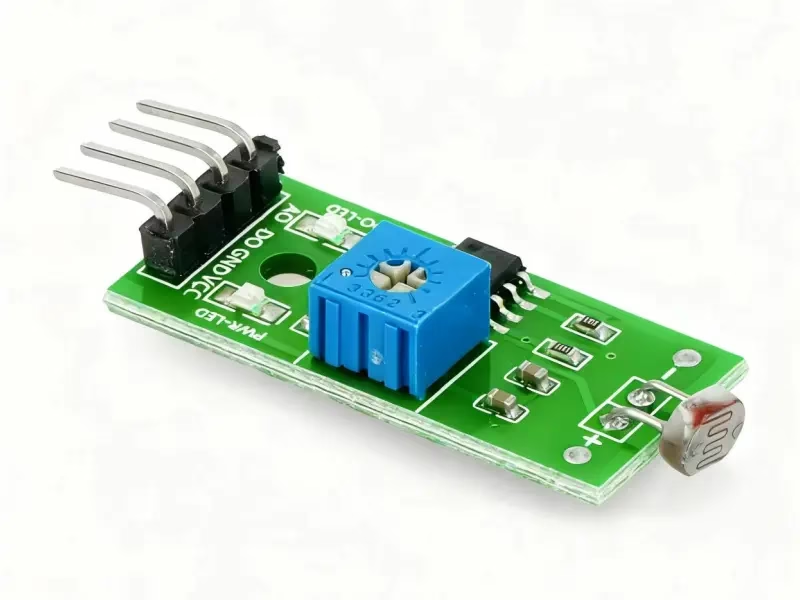
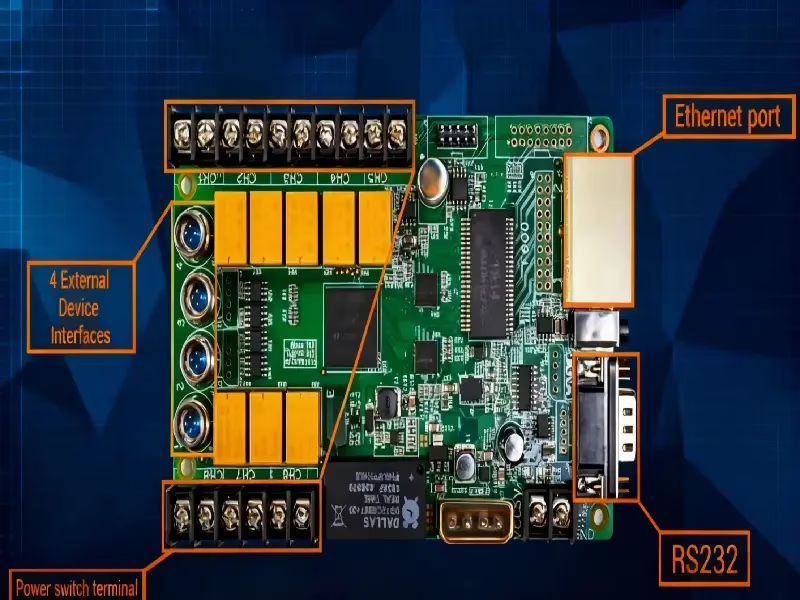
Running an outdoor screen at full brightness (100%) during the night is a huge waste of energy and can cause light pollution complaints.
The Solution: Equip your screen with a Light Sensor and Multifunction Card.
How it works: The system detects ambient light levels and automatically adjusts the screen brightness.
The Impact: At night, the brightness can safely drop from 100% (6000 nits) to 20% (1200 nits) while still remaining perfectly visible. This simple adjustment can reduce nighttime energy usage by 80%.
Interested in this upgrade? Ask our sales team about the Light Sensor Kit.
Smart Content Management (Dark Mode)
Since LED screens are self-emissive, black pixels consume almost zero electricity. The content you design plays a massive role in daily power usage.
White Background: Requires R, G, and B diodes to light up simultaneously at full power.
Dark Background: Requires significantly less current.
Design Tip: Adopt a “Dark Mode” aesthetic for your advertisements. Using black or dark blue backgrounds instead of white not only looks premium but can also cut your led display power consumption by up to 40%.
Efficient Heat Dissipation (AC vs. Fans)
Heat creates electrical resistance, and resistance lowers the efficiency of power supplies. A hot screen burns more electricity just to stay running. You must plan for cooling.
The Golden Formula:
1 Watt ≈ 3.41 BTU/hr
How to plan your cooling:
For Closed/Hot Environments: If your screen is fully enclosed (e.g., behind glass) or in a desert climate, you need Air Conditioning.
Rule of Thumb: For every 4m² of outdoor display (OK Series), you need about 1 Ton (12,000 BTU) of cooling capacity.
For Standard Installations: For most open-air billboards, Industrial Exhaust Fans are sufficient and cost-effective. Ensuring proper airflow lowers the internal temperature, keeping the power supplies in their most efficient range.
7. FAQs
For large custom video walls, No.
A fixed installation draws a massive "Inrush Current" (startup surge) that exceeds the capacity of a standard 15A/20A wall socket. You must hire an electrician to install a dedicated circuit breaker.
Note: Only portable products like LED Posters or All-in-One Conference Screens are designed to plug into standard outlets.
It depends on your voltage.
The PowerCON cable has a physical current limit (usually 20A). You must calculate the load to avoid melting the connector.
In 110V Regions (USA): Max 5 to 6 cabinets per main power cable.
In 220V Regions (Europe/Asia): Max 10 to 12 cabinets per main power cable.
Safety Rule: Never overload the first cable in the chain.
Yes, about 5-10%.
Even when displaying a black image, the screen is not "off." The receiving cards, fans, and power supplies are still running in standby mode.
Recommendation: Do not just "play black content" to turn it off. Install a PLC remote power switch to cut the main power completely at night to save money and extend the screen's lifespan.
8. To Sum Up
Understanding led display power consumption is the boundary between a safe, profitable project and an expensive headache.
If you take away just one thing from this guide, let it be the Golden Rule of Power:
Max Power (Peak): Use this to size your circuit breakers and cables. This ensures Safety.
Average Power (Real): Use this to calculate your electricity bill. This ensures Budget Accuracy.
At UnifyLED, we believe in transparency. Whether you are planning a rugged outdoor billboard to combat the sun or a precision indoor video wall for a control room, we provide the honest engineering data you need to succeed—not just the sales pitch.
Don’t Guess With Electrical Safety
Calculating Amps, balancing 3-Phase power, and selecting the right cable gauge can be complicated. One wrong calculation can lead to tripping breakers or overheating wires.
You don’t have to figure this out alone.
Contact UnifyLED Today. Send us your screen dimensions and installation location. Our engineering team will provide a FREE Power Distribution Diagram tailored to your specific voltage standards (110V/220V), ensuring your installation is safe, stable, and cost-effective.
9. Recommend
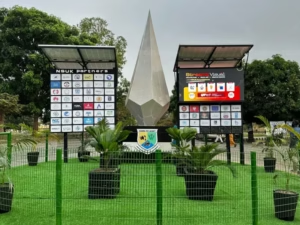
Nits vs. Lumens: Why Your Projector Can’t Beat an LED Screen?
Nits vs. Lumens: Demystifying brightness. See why LED screens beat high-lumen projectors in daylight. Learn the key difference and choose the right display.
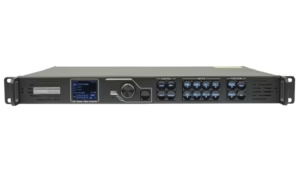
LED Video Processor Guide: Functions, Tips & Top Models
Learn how a led video processor enhances your screen. Explore functions, selection tips, and top Novastar VX vs Huidu VP recommendations.
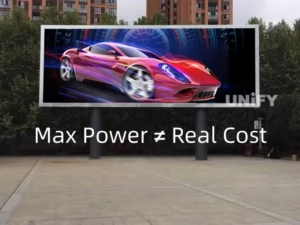
LED Display Power Consumption Guide: Watts, Amps & Cost Calculator
Master led display power consumption calculations. Learn the real difference between Max vs. Average watts and save your budget.
